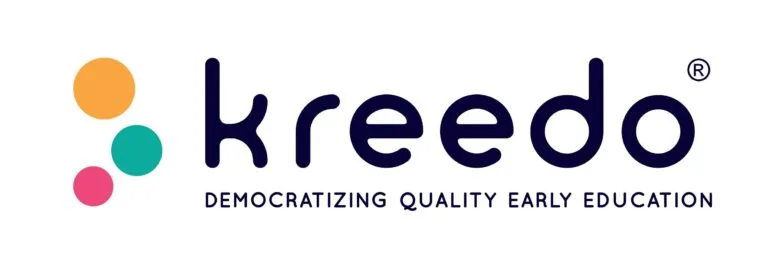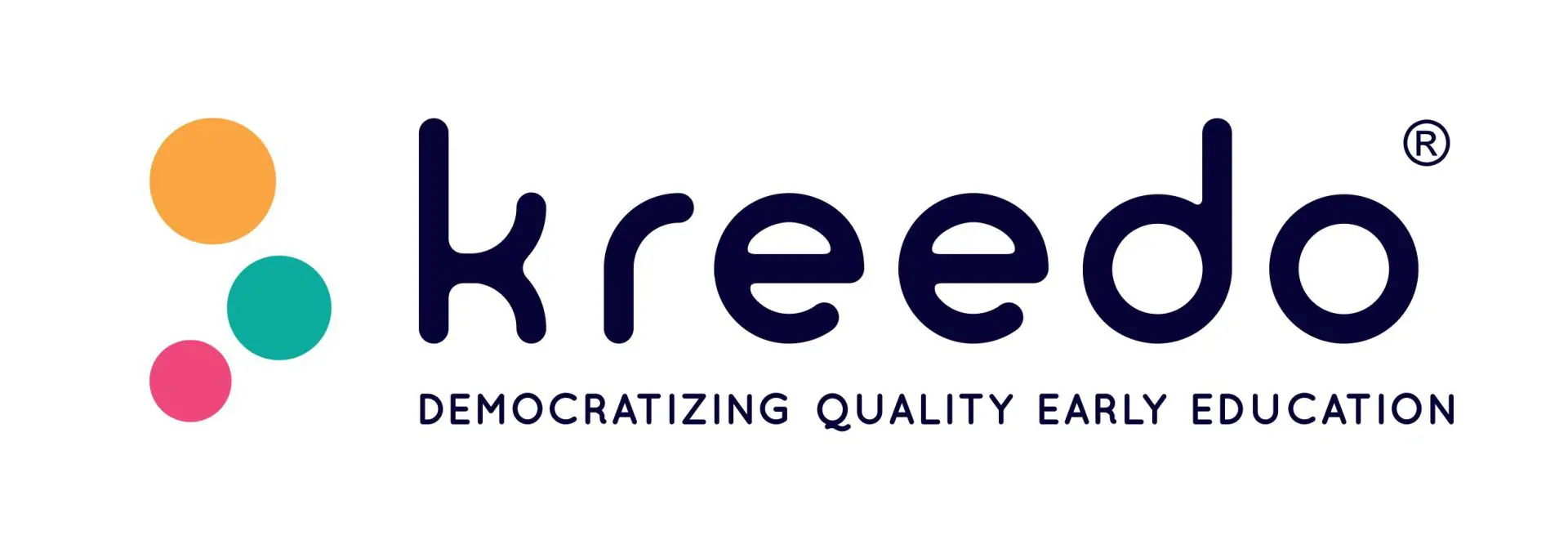Kreedo’s 4Ps of Success
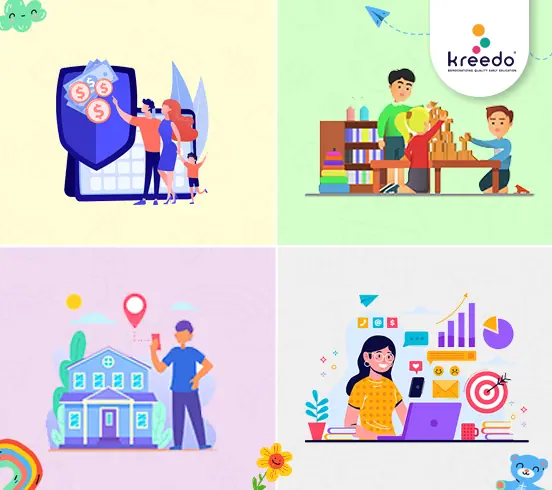
Looking to start a preschool that not only caters to the requirements of the students but also is a successful business? This means the right product combined with the right marketing strategy. It is what we call the science, art, and commerce of running a preschool!
Why is a routine important for a child?
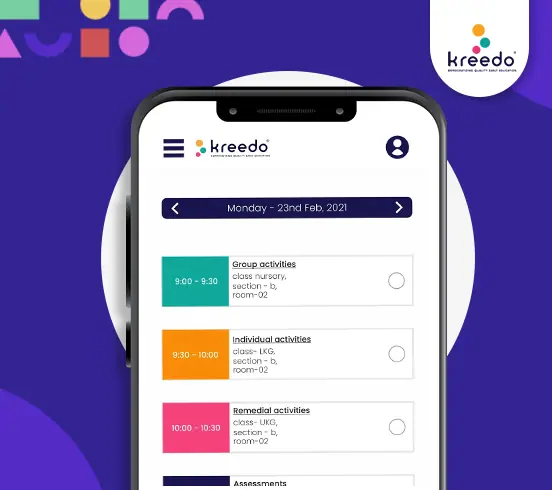
Do you ever feel like your day is just all over the place? Well, guess what? Children feel that way too! That’s why they thrive on routine, and a timetable is just what they need! But wait, what is a timetable? It’s not some kind of a secret code, it’s simply a schedule that outlines the daily, weekly, and monthly activities for your preschool programs.
The National Education Policy and its Relevance in Early Education

Introduction to NEP/NCF
The National Education Policy (NEP) 2020 is a policy statement aimed at reforming India’s education system. The Indian government authorised it in July 2020, and it replaced the previous education policy, which had been in effect since 1986. The NEP 2020 is founded on the ideals of equality, quality, and accessibility, and it aims to solve the issues confronting the Indian education system.
In this regard, the National Curriculum Framework (NCF) was developed with the National Education Policy (NEP) 2020 in mind, and it serves as a guiding light for educators to set the basis for the framework of early education curriculum in their schools.
Guiding Principles for the Foundational Stage NEP 2020:
To recognize, identify and foster the unique capabilities of each student as every child has their own learning pace.
The most important idea is that children must interact with materials, activities, and environments to develop essential skills through play and experience, providing an ongoing opportunity to explore and experience the learning environment.
Children learn through imitation, observation, and partnership, which provides them with real experiences through their senses.
Gender, caste, class, and differently-abled equity should be emphasised in the text.
How do children learn at the Foundational Stage?
Children are natural learners – active, eager to learn with an innate sense of curiosity! What piques their interest? Their playfulness with materials, ideas, thoughts and feelings helps in developing their abilities and enhances their concentration, attention and perseverance. Through natural and active participation with others and real-world materials, their creativity and problem-solving skills grow positively.
When we observe children engaging in play, we notice a few things that are crucial to their learning and development. They are:
Choice – an option for children to choose and decide their goals, enabling them to be active and engaged.
Wonder – a thought that enables them to think and focus on what is happening during their play.
Joy – a feeling of happiness when children are enjoying themselves, helping them make meaningful interactions and increasing the desire to learn further.
Guided Play Structured Play
Roles
Child-led
Teacher supported
Teacher-led
Children actively participate
What do children do? Children organise and direct their own play. Children actively listen, follow rules, and engage in teacher-planned activities and games.
What do teachers do? Teachers provide assistance and actively stimulate play. Teachers assist the children through various chores, ask questions, and play with the children to fulfil particular learning objectives. Teachers carefully construct activities and games that follow particular norms in order to enhance competencies in a learning sequence. Every day, language and maths games, nature excursions, songs and rhymes are prepared.
Pedagogy
In order for a child to learn efficiently, a safe and stimulating environment is essential. And in order to achieve this, there must exist a nurturing relationship between teacher and student. Understanding and addressing different learning experiences and capabilities of a child is crucial to their development. When classroom learning and play are correctly intertwined to children’s lives and contexts, the latter tend to learn better.
It is imperative to help a child grow physically and cognitively during the foundational stage, as it is now that they are the most comfortable and can learn best in their home environment, in their home language. Learning experiences should thus, be designed to build on children’s previous understanding and classroom processes.
Components of a teaching plan
Good planning requires an awareness of the curricular goals, competencies, and learning objectives to be reached, as well as the past learning of the students for whom the plan is being developed, as well as the teaching-learning tools and content to be employed. So, what could the major components of a teaching plan be?
– Competencies, Learning Outcomes and intended lesson objectives.
– Duration and proper sequence of activities.
– Classroom arrangements, that is, seating displays, arrangement of material for optimum efficiency/productivity
– Teacher-directed, Teacher-guided and/or child-led activities to achieve overall objectives.
– Content and material to be used in activities.
– Specific strategies for children who require extra attention.
– Set methods of assessment.
Overall, the National Education Policy has the potential to transform the education system in India and ensure that every student has access to high-quality education that prepares them for the challenges of the 21st century. With the right resources, support, and commitment, India can become a global leader in education and empower its citizens to achieve their full potential.
Books and Learning: The Building Blocks of Success
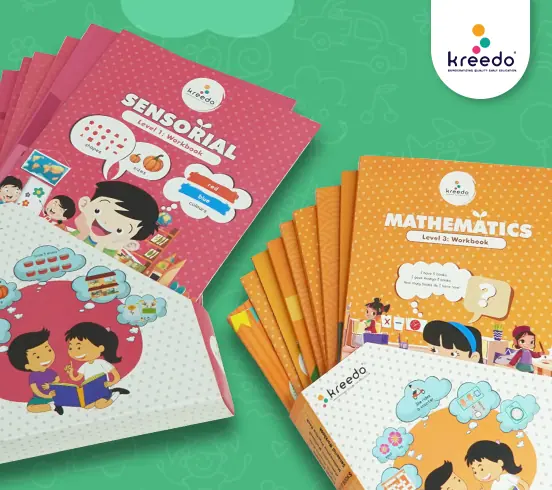
Have you heard about the new National Education Policy? With its recent implementative changes, it has placed even greater importance on Early Childhood Care and Education (ECCE). It is because the early years of a child’s life are critical for their development and learning! And a key part of ECCE is using books that meet policy guidelines.
What does that mean? Not only do they provide knowledge and information, but they also help children in so many other ways. Reading books can help develop language and vocabulary skills. Exposure to a wide range of words and concepts can stimulate young minds and help them develop a love for language! And that’s not all – books can also help stimulate the brain of a child, enhance their cognitive development, and even develop their social and emotional skills! Books can even induce children to think creatively and develop their imagination. But, let’s not forget, selecting the right books for preschoolers is crucial. We want to ensure they receive the best possible start in life, right?
Aligned with the latest NEP guidelines that promote holistic learning and development, the books provided by Kreedo could prove useful for a child’s overall improvement. Developed by Early Childhood Education experts, Kreedo’s books follow a child-centric and play-based approach, covering critical areas of development like literacy, numeracy, sensorial, logical reasoning, and environmental science. Our curriculum is implemented through scientifically designed learning materials, classroom activities, assessment modules, and books.
Kreedo books are provided to children based on their age and developmental stage. The rhyme book for nursery-level children helps them pronounce words and numbers correctly. Workbooks are provided for language, mathematics, and cognitive skills at different levels, while EVS books cover all curriculum areas across the nursery, preschool, and elementary levels. A lab book helps the students move from concrete to abstract learning, developing logical reasoning and making learning easy. Vocabulary enrichment books at every level help children expand their vocabulary and improve language skills. In contrast, the art and craft book develops a creative outlet that encourages decision-making and inventiveness in various ways.
We know that toys and materials are not ordinary playthings, they are children’s partners in developing skills and understanding concepts and Kreedo’s learning materials are mapped to the curriculum, which takes learning to the next level. So, what is the point of having books? They reinforce whatever the child learns through the material, Which means that the concepts which the child learns in the concrete form will be reinforced through the abstract form. The concepts learnt in such a way will stick with the child for a long time.
So, books are an essential tool for parents and educators to introduce children to new concepts and experiences. Kreedo has been using activity-based learning with toys and books to deliver the best learning outcome, for many years and has proven useful in providing quality education to the students in our partner schools.
Technology and Early Education: How does it work?

Technology is playing an increasingly important part in early education, especially during the recent pandemic where we have seen the world harness its power to continue its pursuit of education.
